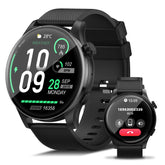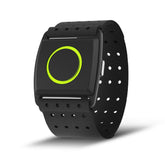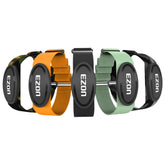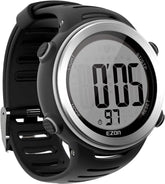Endurance Training and Calories Burned Calculation for a Healthy Lifestyle
Maintaining a healthy, active lifestyle often hinges on two key pillars: endurance training to build stamina and cardiovascular health, and understanding calories burned to balance energy intake and output. Whether you’re a seasoned athlete or just starting your fitness journey, mastering these elements can help you achieve your goals, from improving athletic performance to managing weight. In this guide, we’ll explore how to design effective endurance workouts and accurately calculate calorie expenditure, with a focus on tools like the calorie counter watch to streamline your efforts.
The Foundation of Endurance Training
Endurance training targets your body’s ability to sustain prolonged physical activity, enhancing oxygen utilization, muscle efficiency, and mental resilience. Key benefits include:
- Improved heart and lung function
- Increased fat oxidation (burning fat as fuel)
- Enhanced stamina for daily tasks and sports
- Better recovery from high-intensity efforts
Types of Endurance Workouts
- Steady-State Training: Low to moderate intensity (60–70% of max heart rate) for extended periods (e.g., 30-minute jogs, cycling, or swimming).
- Tempo Runs/Trials: Moderate to high intensity (70–80% HR) that pushes your lactate threshold, improving the ability to sustain faster paces.
- Long Slow Distance (LSD): Low-intensity workouts lasting 1.5–4 hours, ideal for building a base for marathons or triathlons.
Consistency is key—aim for 3–5 sessions weekly, balancing intensity with recovery to avoid overtraining.
Why Calculating Calories Burned Matters
Tracking calories burned helps you tailor workouts to your goals, whether it’s creating a calorie deficit for weight loss or ensuring you’re fueling adequately for performance. However, accuracy is crucial: generic estimates (e.g., “100 calories per mile”) often miss individual variables like age, weight, muscle mass, and workout intensity.
Factors Influencing Calorie Expenditure
- Body Composition: Muscle burns more calories at rest than fat, so more muscle means higher daily energy expenditure.
- Intensity: Higher-intensity workouts burn more calories during exercise but also boost post-exercise oxygen consumption (EPOC), leading to additional calorie burn.
- Duration: Longer workouts naturally burn more calories, but sustainability and recovery must be balanced.
- Activity Type: Running burns more calories than walking at the same distance, while swimming or cycling may vary based on effort.
Tools for Accurate Calories Burned Calculation
1. Calorie Counter Watches
A calorie counter watch equipped with heart rate monitoring and GPS takes the guesswork out of calorie tracking. These devices use advanced algorithms that factor in:
- Real-time heart rate (a direct indicator of effort)
- Distance, pace, and elevation (for outdoor activities)
- User profile data (age, weight, height, gender)
EZON’s sports watches, for example, combine ECG-based heart rate sensors with motion tracking to provide precise calorie estimates during runs, rides, and other sports, ensuring your calculations reflect your unique physiology.
2. Online Calculators and Apps
While less precise than wearable devices, tools like MyFitnessPal or Fitbit’s calorie calculator offer general estimates. For best results, combine these with a calorie counter watch to validate data during workouts.
3. Heart Rate Zones
Using heart rate zones (based on your maximum heart rate) allows you to estimate calorie burn by intensity:
- Zone 1–2 (Low to Moderate): Primarily burns fat, around 5–7 calories per minute for a 150-pound person.
- Zone 3–4 (High Intensity): Burns a mix of carbs and fat, 8–10+ calories per minute, with added EPOC benefits.
Integrating Endurance Training and Calorie Tracking
1. Designing Workouts for Your Goal
- Weight Loss: Prioritize steady-state cardio in Zone 2 to maximize fat oxidation, paired with moderate-intensity intervals to boost metabolism. Use a calorie counter watch to ensure you’re hitting a daily deficit without overexertion.
- Performance Gain: Incorporate tempo runs and threshold workouts in Zone 3–4 to improve speed and stamina, while monitoring calorie intake to support recovery and muscle maintenance.
2. Fueling for Endurance
Understanding calorie burn helps you plan nutrition:
- During Workouts (90+ minutes): Consume 30–60 grams of carbs per hour (e.g., gels, sports drinks) to sustain energy.
- Post-Workout: Prioritize protein and carbs within 30–60 minutes to aid recovery, using your watch’s calorie data to guide portion sizes.
3. Recovery and Rest
Overtraining can stall progress and lead to burnout. Track resting heart rate and sleep quality with your watch—an elevated resting heart rate may signal fatigue, prompting you to scale back intensity and ensure adequate calorie intake for recovery.
The Role of Technology in Streamlining Your Routine
- Providing real-time calorie burn updates during workouts
- Syncing with fitness apps to track weekly/monthly trends
- Offering personalized insights into how different activities impact your energy expenditure
Combine this with a structured endurance training plan, and you’ll have a data-driven approach to health and fitness that adapts to your goals and lifestyle.
Start Your Journey with Precision
Whether you’re aiming to complete your first 10K, lose weight, or simply feel more energized, mastering endurance training and calorie tracking is key. Invest in a reliable calorie counter watch to eliminate guesswork, stay motivated, and ensure every workout contributes to your long-term health.
Remember: fitness is a journey, not a destination. Use these tools to stay consistent, listen to your body, and celebrate progress—no matter how small.









